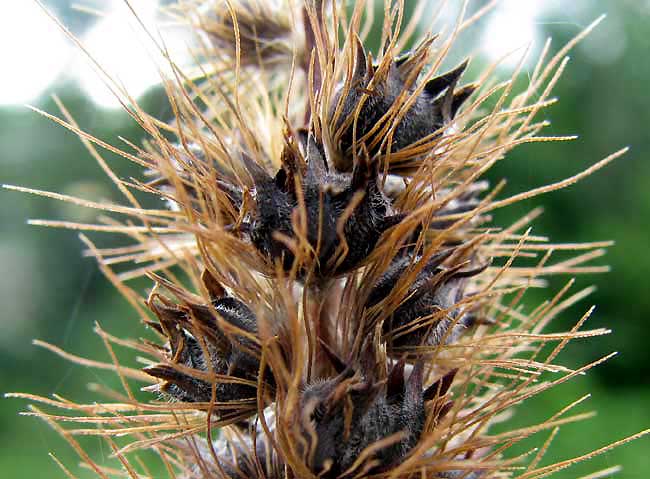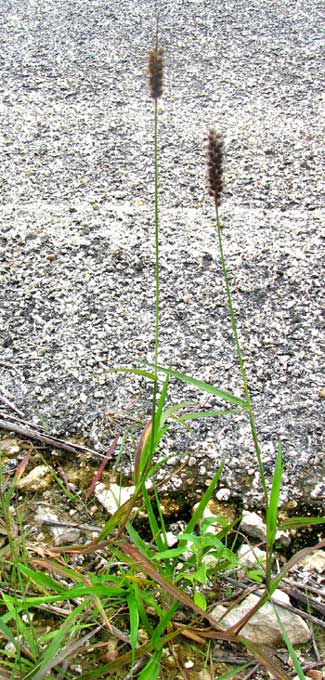Excerpts from Jim Conrad's
Naturalist Newsletter

from the September 5, 2010 Newsletter issued from Hacienda Chichen Resort beside Chichén Itzá Ruins, central Yucatán, MÉXICO; limestone bedrock, elevation ~39m (~128ft), ~N20.676°, ~W88.569°
A PEACEFUL BUR-GRASS
Maybe you remember the vicious Coastal Sandbur grass, Cenchrus spinifex, that so painfully stuck into feet of those walking along the beach in Quintana Roo back in late 2008. You can see those wretched, spiny fruits at www.backyardnature.net/yucatan/sandbur.jpg.
Along the roads around here sometimes you see a member of that same genus, Cenchrus, with spiky fruits the way a Cenchrus fruit ought to be, but the spines are too soft and blunt to penetrate the skin. You can see a typical plant, with two flowering heads, below:

The spiky fruits, which hardly prick at all, are shown at the top of this page.
This species isn't common enough in English speaking countries to have its own English name, though it can be referred to by the general names of bur-grass or sandbur. It's CENCHRUS BROWNII, a fairly common weed throughout much of the world's tropics, and supposedly introduced here and there in the US Southeast.
As always, it's so neat to see "variations on the theme," this time the theme being the genus Cenchrus. Cenchrus brownii's memorable contribution to the music that is Cenchrus is the relative softness and bluntness of its fruits' spines. Cenchrus in general is martial percussion and harsh, intimidating tonalities, but Cenchrus brownii comes on as an unforeseen strain on the French horn, masculine and offish to be sure, but much mellower than the music it's embedded in.